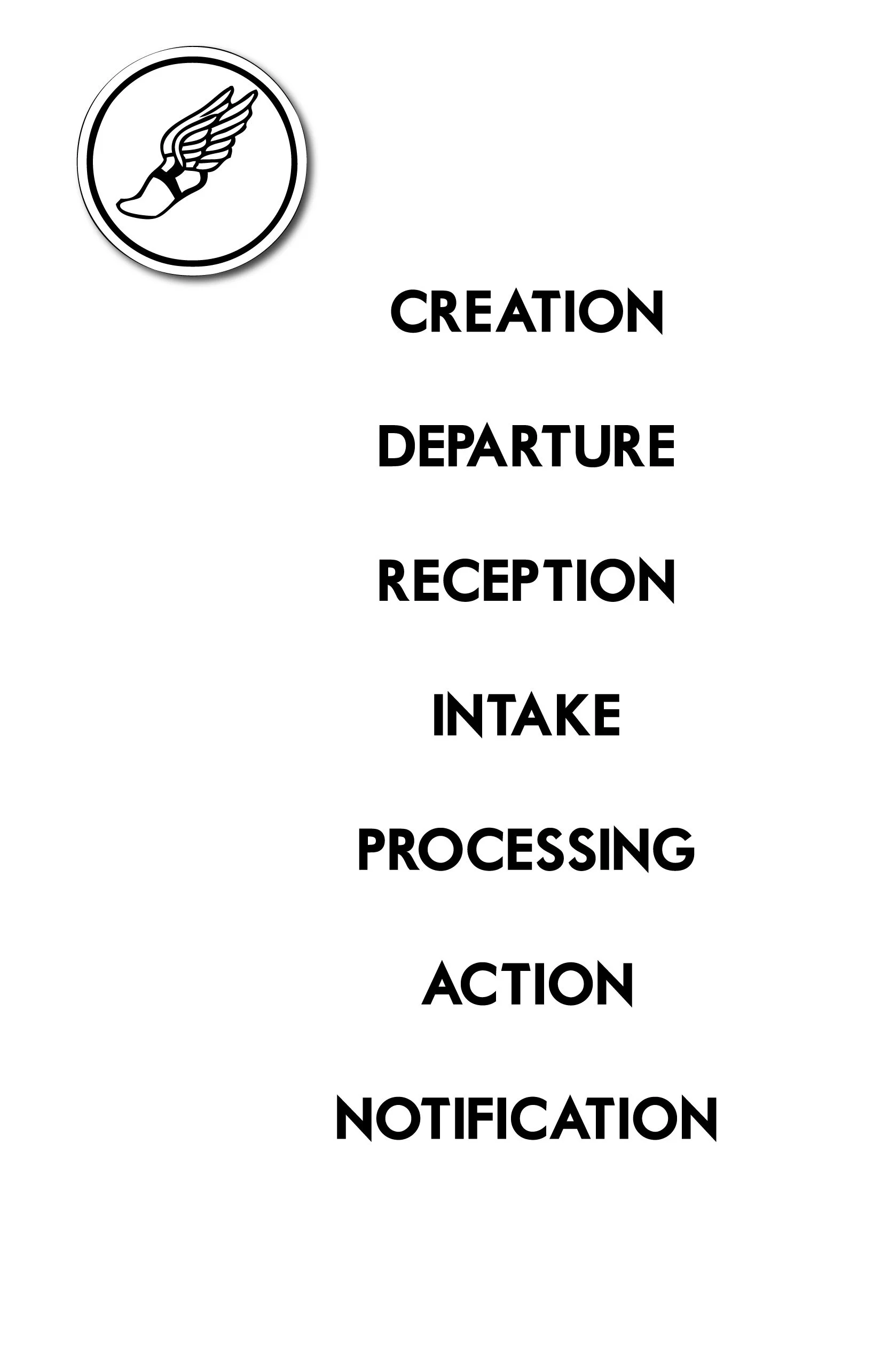Communication deconstructed
Communication Deconstructed
There is value in deconstruction. Taking things apart helps us see the pieces of the whole with increased clarity. We are going to do that right now. Take a look at the following recipe. Don’t rush. Take it in. Consider it. Mull it over. Push and prod it. Here is communication deconstructed.
We have now isolated one half of a conversation. Repeat this over and over and you see the skeleton of dialogue.
Let’s quickly now zoom in on each step.
Creation: What is it you’re trying to say? Why do you want or need to say it? Who are you specifically saying it to? What do you hope they will know, feel or do as a result of reading, seeing or hearing it?
Departure: You must determine the route it will take. Will this travel via email, phone call, TV advertisement, direct mailer, social media, or *gasp face-to-face interaction? Do not underestimate how crucial of a decision this is. Check out the section in chapter R about military officers delivering death notices.
Keep in mind that the more personalized your message is FOR the recipient, the better your chances of success. Each year on the day after my birthday, I make sure to go through all the well wishes on Facebook and write a thank you reply to every single one personally.
Reception: Plain and simple, this is the most critical step. Your message wasn’t merely sent but it was received. Did you get my email? Did you hear my voicemail? Did my letter arrive? Did you hear what I just said? You get the picture.
Notification: Cross your fingers since this is also not guaranteed to happen. However, there are things we can do on our end to increase the chances of knowing the message was at least received. A few years ago, I made one of the smartest investments of $5 a month. It’s an add on to my email service that sends alerts each time an email is opened. Finally, I could put to rest my constant wondering if certain emails were being opened and/or read! There are conversational techniques we can use to give us similar results. Try these next the time you’re talking with someone.
Ask them what they think about what you’re saying.
Ask them to repeat back what you’d like them to know or do.
Ask them to let you know when they have completed what it is you’ve asked them to do.
Speaking to a large group, say “clap once if you can hear me.”
Of course, if you’re a great listener or have great social awareness then this will come much easier for you than it will with the rest of us.
Intake: Here’s where things get more complex. Going back to the creation step, you should have had the receiver(s) in mind as you constructed your message. Yes, even verbal communication can be constructed before you speak it. Sometimes you have all the time in the world to construct while other times you only have seconds. You and I cannot guarantee how someone will intake your message. They are reading, hearing and experiencing through a filter. The very fact that you can create messages with this awareness puts you far ahead of most people. Perhaps the most helpful intake filter to be conscious of is that most of us are busy. And not just busy, but inundated with hundreds or thousands of other messages that might be more or less important to them than yours. Thousands? Absolutely. The average American sees 5,000 advertisements per day. And that’s just advertisements.
Processing: The receiver now considers what your message is telling them. In conversations, this is something I take longer with than others. Some of us process quickly and some, like me, not so much. Can the receiver actually be lazy or forgetful? Sure. If we believe the best about them though, it’s a matter of how their brain works. They draw on all kinds of information stored in their memory.
“Why is this person even asking me this question?”
“Is this thing they are telling me about really all that great?”
“I need to think about this in a few days when my mind is clear.”
“Am I just a number to the sender or are they genuinely interested in connecting with me?”
Action: It’s go time. Well, hopefully. A love letter may get the desired action of the receiver’s heart beating a little faster as she holds it tight in her hands as her eyes close. Everyone erupts in screams as the lead singer on stage shouts into the microphone, “You feelin’ good tonight?!” 25 sales are made after your marketing pitch at a seminar. Your best friend gives you the longest and tightest hug of your life when you break the news that your sister has cancer.


